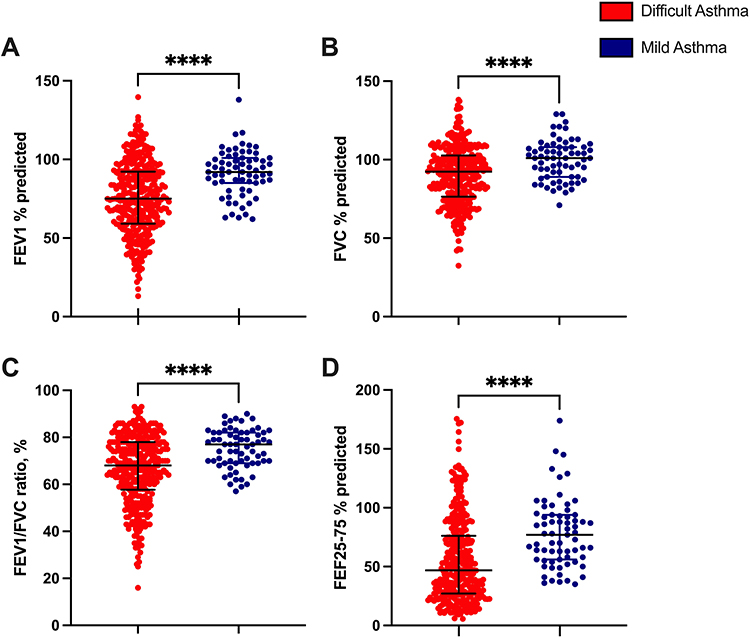Naftel J, Mistry H, Mitchell FA, Belson J, Kyyaly MA, Barber C, Haitchi HM, Dennison P, Djukanovic R, Seumois G, Vijayanand P, Arshad SH, Kurukulaaratchy RJ. J Asthma Allergy. 2023;16:1333-1345
Background: Despite most of the asthma population having mild disease, the mild asthma phenotype is poorly understood. Here, we aim to address this gap in knowledge by extensively characterising the mild asthma phenotype and comparing this with difficult-to-treat asthma.
Methods: We assessed two real-world adult cohorts from the South of England using an identical methodology: the Wessex AsThma CoHort of difficult asthma (WATCH) (n=498) and a mild asthma cohort from the comparator arm of the Epigenetics Of Severe Asthma (EOSA) study (n=67). Data acquisition included detailed clinical, health and disease-related questionnaires, anthropometry, allergy and lung function testing, plus biological samples (blood and sputum) in a subset.
 |
| Lung function characteristics between the difficult and mild asthma cohorts. |
Conclusion: Phenotypic characterisation of mild asthma identified early-onset disease with high prevalence of current smokers, T2-high inflammation and significant multimorbidity burden. Early comprehensive assessment of mild asthma patients could help prevent potential later progression to more complex severe disease.

No comments:
Post a Comment